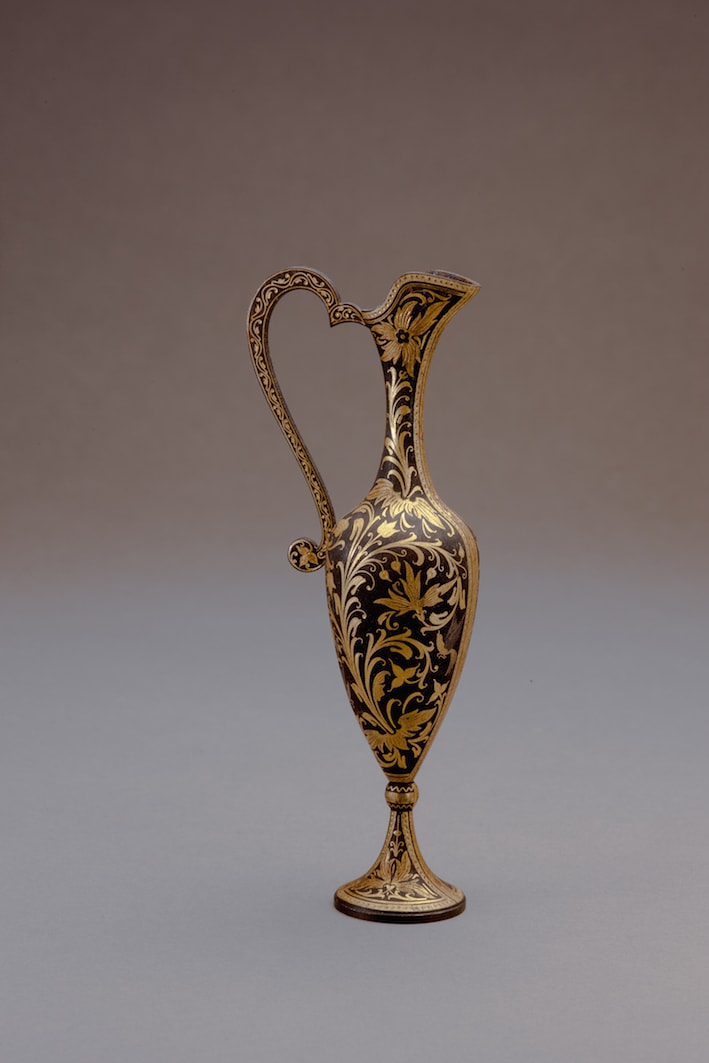Damascened interlaced with gold elegant Toledo workshop vase with handle
height 17.8 cm
height 7 in
height 7 in
MS.1293
Gold inlaid elegant vase in the shape of a water-jug, with a scene representing Don Quixote De la Mancha with his faithful squire Sancho Panza embracing, when the latter leaves...
Gold inlaid elegant vase in the shape of a water-jug, with a scene representing Don Quixote De la Mancha with his faithful squire Sancho Panza embracing, when the latter leaves for Granada, a scene taken from the literary work of Miguel de Cervantes. Damascening is the art of inlaying different metals into one another—typically, gold or silver are inlaid into a darkly oxidized steel background—to produce intricate patterns, much similar to the technique of niello. The English term derives from a perceived resemblance to the rich tapestry patterns of damask silk.
The technique of niello -a black mixture of copper, silver, and lead sulphides, used as an inlay on engraved or etched metal- has been attested in prehistoric Greece, with the earliest occurrence of damascening in the Aegean being a dagger from the Shaft Graves of Mycenae, dating to the latest Middle Bronze Age/Middle Helladic IIIB period (2000 BC. ca)
Cities that are known for a rich history in Damascening and in which the art is still practiced are Malaysia, Indonesia, Toledo in Spain, Eibar in the Basque Country and Kyoto in Japan.
The art of Damascening arrived to Toledo directly from Damascus and developed a very important industry around this craft, also known as Toledo Gold. The art of damascene has passed from generation to generation within the same family for centuries, and has become a hallmark of the city.
The technique of niello -a black mixture of copper, silver, and lead sulphides, used as an inlay on engraved or etched metal- has been attested in prehistoric Greece, with the earliest occurrence of damascening in the Aegean being a dagger from the Shaft Graves of Mycenae, dating to the latest Middle Bronze Age/Middle Helladic IIIB period (2000 BC. ca)
Cities that are known for a rich history in Damascening and in which the art is still practiced are Malaysia, Indonesia, Toledo in Spain, Eibar in the Basque Country and Kyoto in Japan.
The art of Damascening arrived to Toledo directly from Damascus and developed a very important industry around this craft, also known as Toledo Gold. The art of damascene has passed from generation to generation within the same family for centuries, and has become a hallmark of the city.
